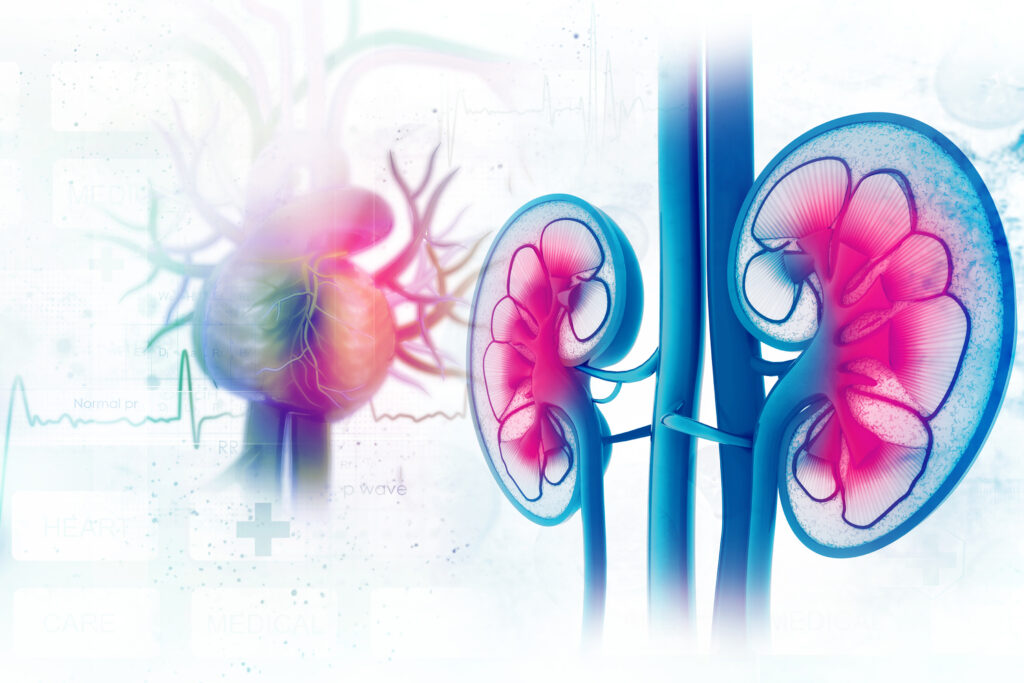Cardiovascular disease (CVD), continues to be the leading cause of death in the United States and worldwide. Many patients with CVD have signs of chronic kidney disease (CKD), and those with CKD are often times disproportionately affected by CVD.

This interconnectedness was further explored in a recent study published in the Journal of Clinical Investigation that identified a new immune target, suPAR, as a protein that causes kidney disease and atherosclerosis, the most common form of CVD. Unlike traditional approaches to treating CVD such as controlling blood pressure and lowering cholesterol, this breakthrough research offers a new approach to treatment from an entirely different perspective.
What’s suPAR and Where Does it Come From?
Soluble urokinase plasminogen activator receptor, also known as suPAR, is produced by the bone marrow. It’s an immune-derived mediator of kidney disease and is strongly associated with cardiovascular outcomes.
Past studies have confirmed suPAR to be a marker of CVD and closely tied to leading risk factors for atherosclerosis like smoking, diabetes mellitus, and CKD. However, this is the first evidence that the protein, when at high levels, actually causes atherosclerosis, and the first time a component of the immune system has met all of the requirements as a promising treatment target.
Assessing the Relationship between suPAR Protein and Atherosclerosis
The study, led by Michigan Medicine, used epidemiologic, genetic, and experimental approaches to assess the causal relationship between suPAR and atherosclerosis. Investigators conducted a study of 24,000 people to determine whether certain genetic variations affected levels of suPAR in blood. They discovered that a specific variant in the gene PLAUR that codes for suPAR, was linked to atherosclerosis and that people with this genetic variant tend to have higher suPAR levels. The genetic data also confirmed that those lacking a copy of the PLAUR gene have a lower risk of CVD.
Using mouse models with high suPAR levels, researchers observed a dramatic increase in atherosclerotic plaques of mouse aortas in comparison to those with normal levels. “High suPAR levels appear to activate the immune cells and prime them to overreact to the high cholesterol environment, causing these cells to enter the blood vessel wall and accelerate the development of atherosclerosis,” says Daniel Tyrrell, Ph.D., co-first author and research fellow at the U-M Health Frankel Cardiovascular Center.
What’s Next?
This research justifies suPAR as the link between kidney and cardiovascular disease. It’s the common factor causing both diseases through inappropriate, persistent activation of the immune system.
New doors are opening for the development of safe treatments to reduce suPAR levels that will prevent and treat heart disease. According to Salim Hayek, M.D., physician-scientist and medical director of the University of Michigan Health Frankel Cardiovascular Clinics, his lab has already begun working on the design of anti-suPAR therapies and planning clinical trials. Within the next three to five years, he hopes to bring game-changing treatments for atherosclerotic and kidney disease and pave a new path in treating cardiovascular disease.
Promega products used in this paper:
FuGENE 6 was used for transfection
Related Posts
Riley Bell
Latest posts by Riley Bell (see all)
- The Largest Known Genome: Unveiling Nature’s Genetic Giant - July 2, 2024
- Community Canvas: Taylor McAda’s Vibrant Mural on Madison’s State Street - May 3, 2024
- Celebrating Our 2023 Promega In Action Awardees - April 18, 2024
